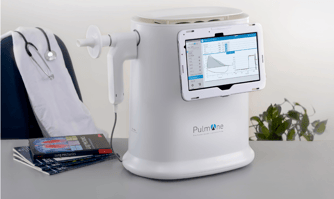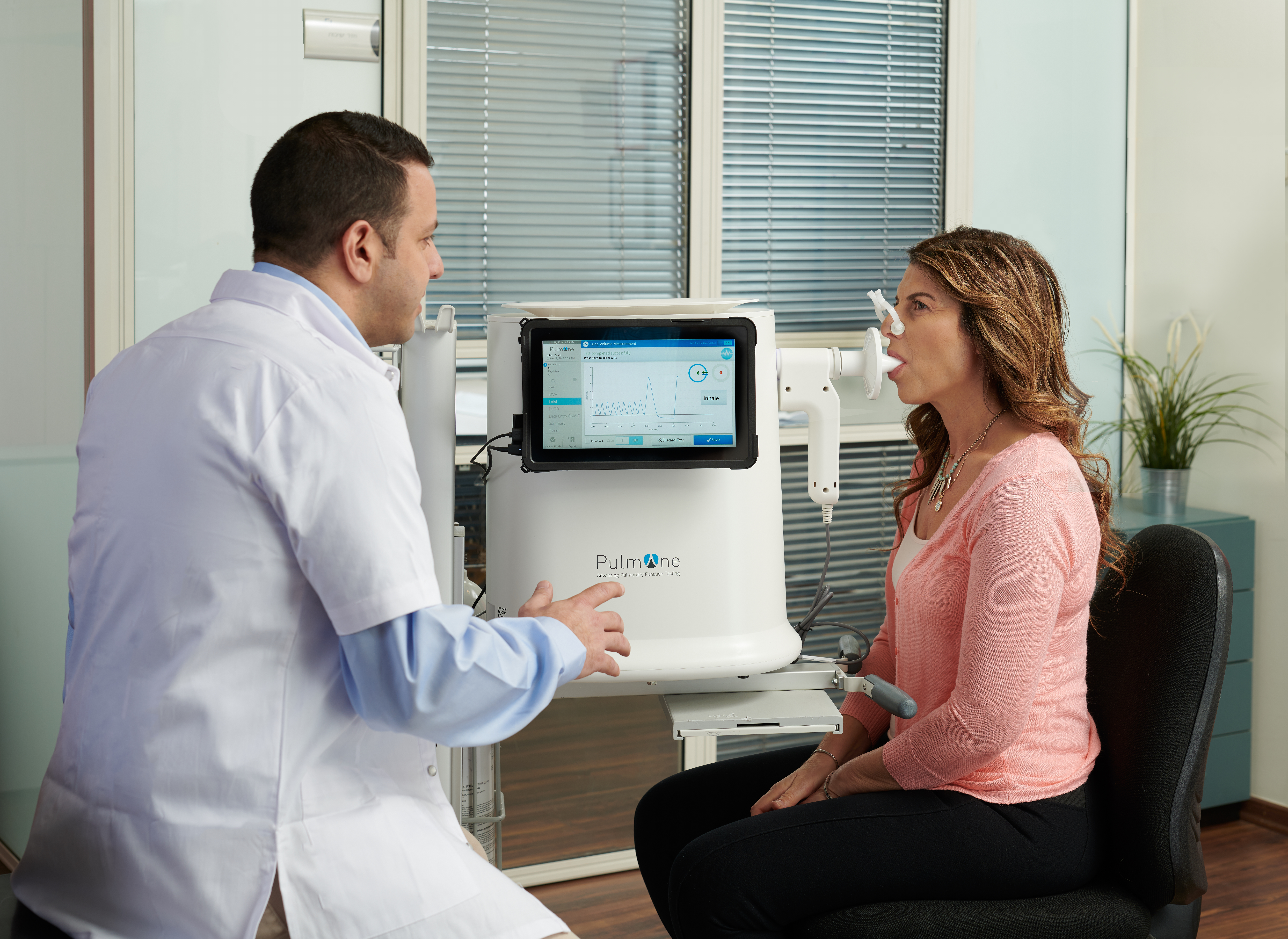PFT Safety Recommendations during COVID-19 and beyond: Testing equipment, method, and procedures.
Statements ERS and Force Task APCCSDD/ATS the of review A
Pulmonary function testing (PFT) has a whole new set of safety considerations in the COVID-19 world. Given the reality that PFT presents a high risk of COVID-19 transmission among patients/subjects and clinicians, the American Thoracic Society (ATC) issued a statement1 last April with three directives:
- PFT should be performed only when essential for immediate decisions;
- Only the most essential tests should be performed;
- Protective measures should be implemented for both the staff and patients.
Protective measures like wearing a mask, gloves, and gowns are familiar to all of us. But what kind of protective measures do the testing devices need to have? And what about the testing procedures? And the testing environment?

COVID-19 Recommendations for PFT
These questions were addressed in an article2 published in July's ATS Journal by a task force consisting of members of the Association of Pulmonary, Critical Care, and Sleep Division Directors (APCCSDD) and American Thoracic Society (ATS), as well in a statement3 released in early May b the European Respiratory Society (ERS) Group 9.1.
These two position papers provide a variety of safety recommendations for limiting the risk of viral transmission in testing clinics. These include criteria for resuming PFT, patient prioritization, screening and testing for SARS-CoV-2, staff protection strategies, testing and waiting area strategies, and more.
This review is limited to those recommendations that relate only to testing equipment, method, and procedures, when it has been determined that PFT is indicated.
Testing Equipment and Method
Filters
Both groups state that testing devices must have a disposable, in-line bacterial/viral filter. Combined mouthpieces/sensors are not recommended. [Note: Actual bacterial/viral filter specifications needed for preventing cross-contamination with the COVID-19 virus are not mentioned. However, we know that the Coronavirus species ranges in size from 0.06 to 0.2 µm, so if a PFT device uses a bacterial/viral filter, its effectiveness should be confirmed accordingly.]
Plethysmography
Both groups suggest that when lung volumes are indicated, the use of body plethysmography may be preferable, due to "containment of exhaled air" (APCSSD/ ATS Task Force), or "if droplet contamination can be contained, and local national guidelines support this" (ERS Group 9.1). [Note: With cabinless plethysmography, exhaled air is fully contained and droplet contamination is marginal during testing.]

Safety Procedures Between Patients
Disinfection/cleaning
Both groups recommend that all testing equipment surfaces, and the surrounding environment (ERS) should be disinfected/cleaned between patients. [Note: The time required for adequate cleaning may vary widely, depending on the surface area of the equipment/device.]
Calibration
The ERS Group 9.1 recommends recalibration of the lung function equipment after decontamination. [Note: Devices that perform rapid self-calibration before testing a new patient offer a time-saving advantage here.]
Room Ventilation
Both groups recommend room ventilation. The ERS Group 9.1 gives a general guideline of at least 15 minutes, while the APCSSD/ATS Task Force advises that the exact amount of time will vary depending upon whether the room is under negative pressure and whether there is concomitant use of a high efficiency particulate air (HEPA) filter or ultraviolet light decontamination. [Note: With a portable and mobile device, room ventilation does not entail any delay in treating the next patient; the unit is moved to another room.]
Total extra time required between patients
The ERS Group 9.1 estimates the total extra needed for disinfection/cleaning, calibration and room ventilation as between 30 to 60 minutes; the APCSSD/ATS Task Force does not quantitate this time.
The MiniBox+ Complete PFT device meets each of the above recommendations, with additional operational advantages as described below.

- Testing is performed with a fully compliant bacterial/viral filter, which has successfully passed both BFE (Bacterial Filtration Efficiency) and VFE (Viral Filtration Efficiency) testing for organisms as small as 0.025 um. As mentioned above, the Coronavirus species ranges in size from 0.06 to 0.2 µm.
- As a cabinless plethysmography device, exhaled air is fully contained and droplet contamination is marginal during testing.
- The disinfection and cleaning procedure consists of a 5-minute external wipe down
- Rapid self-calibration is done automatically after each test, so there's no need to re-calibrate manually.
- As a portable device, it can be easily moved into another room for testing the next patient while the previous room is ventilated for the 15+ minutes. The only downtime between patients is for the 5-minute wipe down
Testing Equipment & Method
| Recommendations | ERS | ATS/APCCSDD Task Force | MiniBox+ |
| In line bacterial/ viral filter only | ✓ | ✓ | Complies |
| Plethysmography is preferred for lung volumes | ✓ | ✓ | Complies |
Safety Procedure Between Patients
| Recommendations | ERS | ATS/APCCSDD Task Force | MiniBox+ |
| Disinfect all equipment surfaces | ✓ | ✓ | 5-minute procedure |
| Recalibrate after every disinfection (and after flow sensor removal when relevant) | ✓ | ✓ | Self-calibrates |
| Room ventilation | ✓ At least 15 minutes | ✓ Time varies with use of UV or negative pressure | Does not affect patient flow; unit is easily moved to another room |
| Total turnaround time between patients | 30-60 minutes | Not quantified | 5 minutes |
Download our Info Kit now to learn more about the MiniBox+
-
Pulmonary Function Laboratories: Advice Regarding COVID-19. https://www.thoracici.org/professionals/clnical-resources/disease-related-resources/pulmonary-function-laboratories.php
-
Restoring Pulmonary and Sleep Services as the COVID-19 Pandemic Lessens: From an Association of Pulmonary, Critical Care, and Sleep Division Directors and American Thoracic Society-coordinated Task Force https://www.atsjournals.org/doi/10.1513/AnnalsATS.2020005-514ST
-
ERS 9.1 Statement on lung function during COVID-19 Final with Contributors.pdf. https//er.app.box.com/s/zs1uu88wy51monr0ewd990itoz4tsn2h
